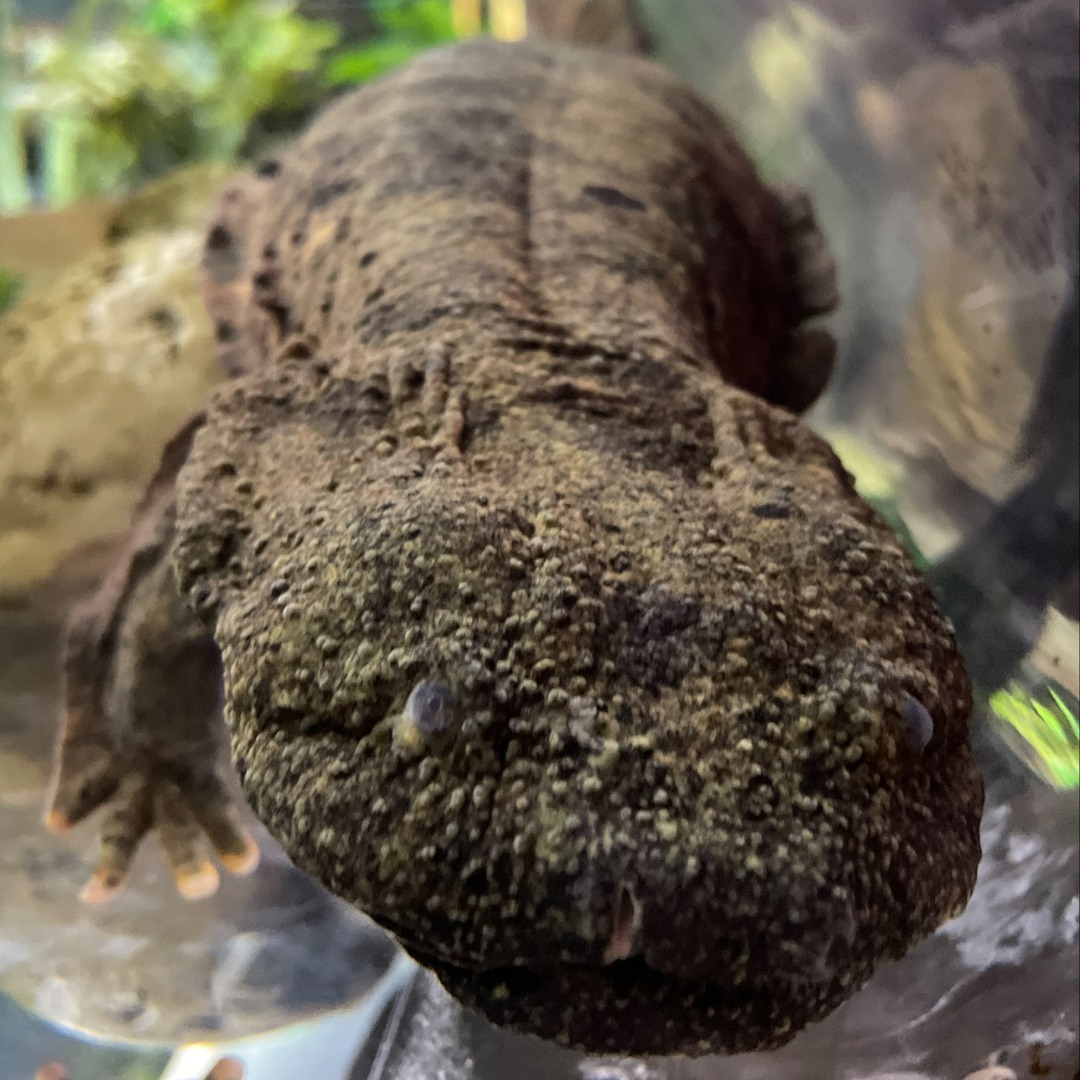– The fascinating process of skin shedding in the animal kingdom, beyond reptiles.
– Insights into the life of amphibians, such as the hellbender, and their shedding habits.
– Understanding why and how various animals undergo skin shedding.
– Exploring the health and ecological significance of skin shedding.
– A spotlight on a captivating photo capturing the essence of these natural phenomena.
Did you know that reptiles aren’t the only animals that shed their skin? Creatures of the amphibian persuasion, including our charming hellbender, Meatloaf, also cast off the most superficial component of their epidermis with comparable regularity. It’s an enthralling aspect of their existence, a testament to nature’s relentless cleaning and renewal cycles.
This captivating aspect of amphibious life was splendidly rendered in Shannon B’s image, a standout submission in our December photo competition. Drawing inspiration from such striking visual storytelling, let us delve into the world where skin renewal is as natural and essential as the changing seasons.
**The Symphony of Shedding**
Whisking away the old and ushering in the new – nature plays this melody across various species. But why does this phenomenon occur? The answer lies in necessity and function. As animals grow, their skin does not always expand accordingly. Reptiles, such as snakes, must release their confined outer layer to make way for a larger, fresher one. Yet, amphibians like Meatloaf engage in this practice not merely as a nod to growth but as a crucial aspect of their health, removing parasites and maintaining the impeccable condition of their moist, permeable skin.
**A Cloak of Disguise**
Imagine living your life within a cloak that intermittently becomes too taut or worn, forcing you to wriggle your way out. This isn’t merely fancy; it’s a stark reality for many creatures. This process of sloughing, known in science as ecdysis, acts like a reset mechanism, preserving the skin’s vital role in protection and interaction with the environment.
**The Artful Execution**
But how does this shedding take place? For example, the amphibians accomplish this seemingly Herculean task with a finesse that borders on art. They often begin the process at their mouth, pulling and pushing the skin over their body using limbs and even teeth until they emerge anew. It’s a meticulous and marvelous affair that can range from awe-inspiring to, for the squeamish, a bit unsettling.
**Health and Environment Intertwined**
We must consider their unique lifestyle to understand why shedding is paramount to an amphibian’s health. These water-loving creatures have semi-permeable skin that absorbs both water and air. However, this vital asset is a double-edged sword, making them susceptible to toxins and pathogens. Regular shedding ensures these environmental hazards do not accumulate.
**The Hellbender’s Tale**
Within this mosaic of skin-shedding creatures, the hellbender holds a special place. These secretive salamanders, native to the Eastern United States, are cloaked in leathery skin vital to survival in fast-flowing streams. Observing Meatloaf’s shedding is akin to witnessing a dramatic transformation from an unkempt beast to a revitalized, svelte amphibian.
**Photography as a Window**
Photographs, like Shannon B’s evocative capture, serve as a window to this seldom-seen world. Through such visuals, many of us can appreciate the intricacies of these natural events—a marvel of biology frozen in time, speaking volumes of the unseen dramas that unfold in the wild.
**A Call to Preserve**
Fascination must lead to action. Many of the species that exhibit these wondrous natural behaviors are under threat. Though not widely known, the hellbender is facing a decline in its population. Environmental degradation can reduce the quality of their skin, necessitate more frequent sheddings, and eventually diminish their numbers. Each photo, every narrative spun from observing these creatures, is a clarion call to protect their habitats.
**Embarking on the Exploration**
For those curious souls motivated to observe such phenomena, local nature reserves and carefully managed ecosystems offer opportunities to witness shedding in a respectful, non-invasive manner. Encounters with our slithering and waddling friends are thrilling adventures and lessons in the delicate balance of ecosystems.
**Interactive and Inspiring**
Delving into the science behind skin shedding can be an interactive and inspiring journey, particularly for the younger generation. It’s a chance to promote an understanding of biodiversity and inspire future stewards of our planet. Engaging exhibits and citizen science campaigns can turn onlookers into passionate protectors.
**Ecological Storytelling**
Tales of Meatloaf’s shedding and the stark allure of contest-winning photography remind us that every aspect of an animal’s behavior tells a story—an ecological one where each character plays a role. Sharing these stories can uplift, educate, and inspire awe for the complex tapestry of life.
**Sustaining Our Wildlife**
Amidst the joy these wonders instill, it is important to remember our role in safeguarding the futures of these incredible animals. Supporting conservation efforts, reducing pollution, and advocating for wildlife-friendly legislation are essential. It is up to us to ensure scenes such as the magical molting moment captured by Shannon B can happen for generations to come.
In closing, Meatloaf the hellbender and his fellow skin-shedders are more than biological marvels. They are storytellers, educators, and unwitting environmental barometers. The simple act of shedding becomes a symphony of survival and a mirror reflecting our responsibility. As custodians of this planet, may we listen and act, ensuring that the natural orchestra plays on?
*****
Source Description
Did you know that reptiles aren’t the only animals that shed their skin? Amphibians, like our resident hellbender Meatloaf, also slough off the outermost layer of their epidermis regularly!
This amazing photo was Shannon B’s entry in our December photo contest.


